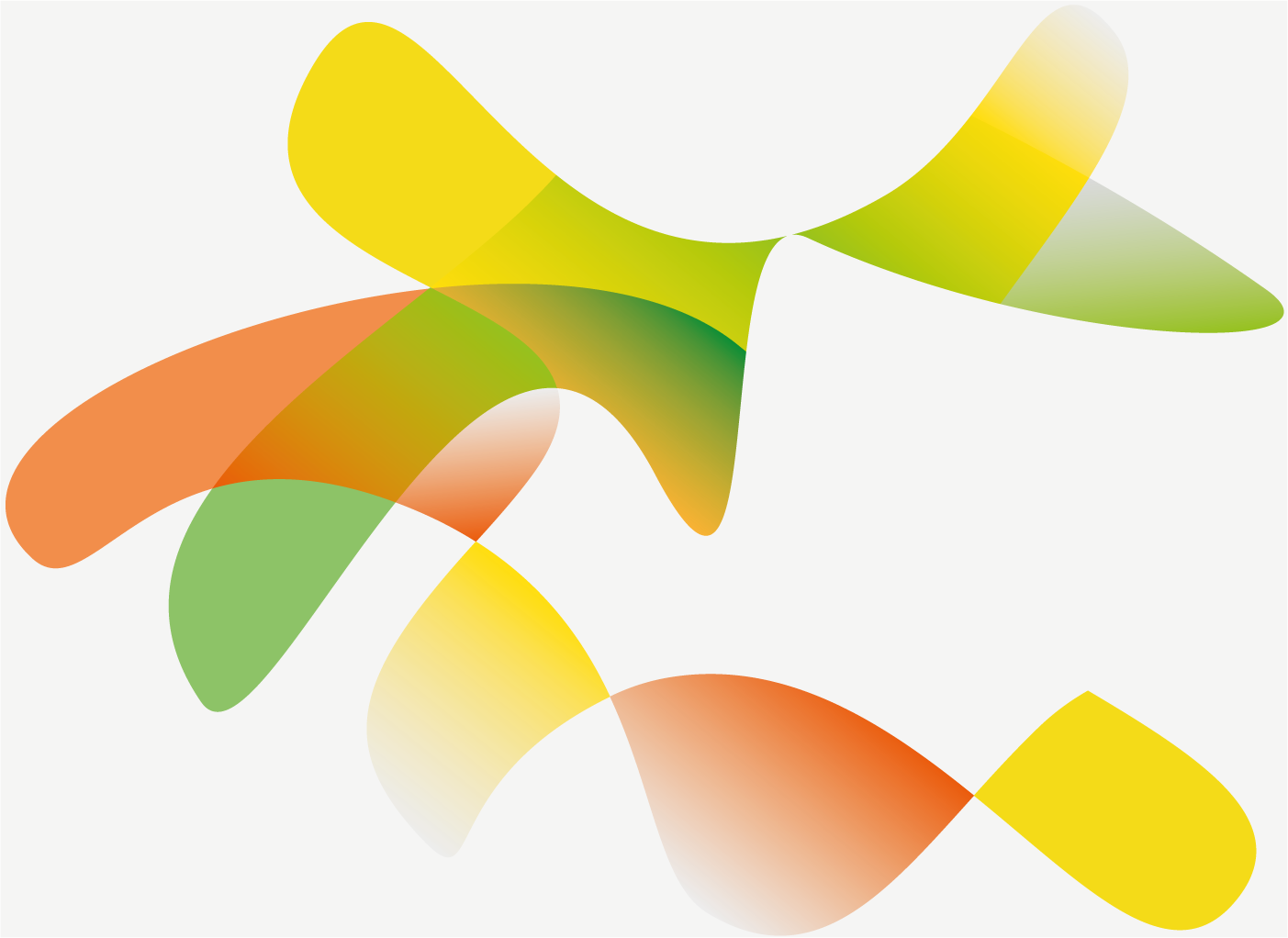The design research
We live in a visual world, dominated by sight, posing communication challenges for those with visual impairments who read with their fingertips. Ann’s research exposes the complexities involved in bridging the gap between visual and tactile modalities.
Enhancing tactile communication means maximizing the sensory experience beyond functionality. In collaboration with experts and creatives, both sighted and visually impaired, she has researched the boundaries of braille, imagery and tactual perception, and explored the expressive qualities of materials and techniques. Ann has developed a framework for a tactile-centred graphic design approach, including tools and a library of tangible studies and designs, establishing tactile graphic design as a new creative field.
Dissolve the purely descriptive registering of the world and liberate the analogical imagination.
Jan Švankmajer
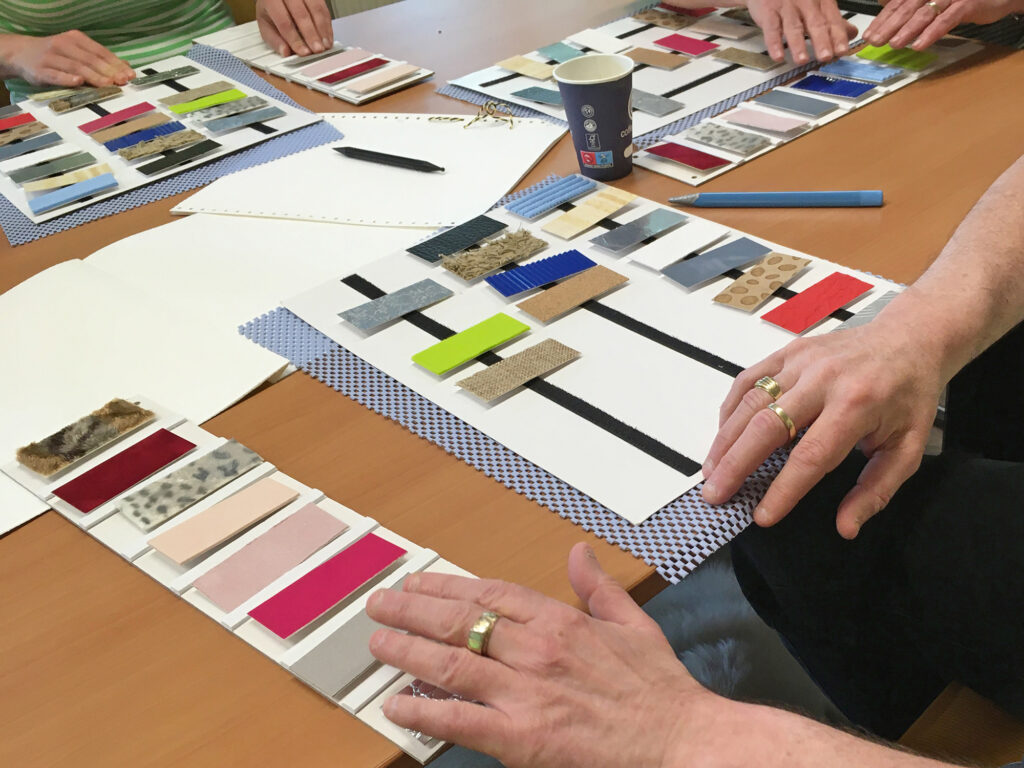
Integral to her design research are the interactive workshops and testing sessions where participants explore the communicative strength and aesthetics of the sense of touch, so often neglected in our visual world. Inspired by Marinetti’s manifesto on Tactilism, she has created ‘tactile boards’ and ‘tactile trigger cubes’ to help participants categorize materials by surface and affective qualities. This research feeds into a growing database of material values. In other workshops, participants describe objects by touch and create tactile drawings. Many are surprised at how different objects look to the way they feel, emphasising how sight dominates our perception. For example, during a session with blind children, Ann brought along a real fish to help them make the connection with her tactile drawings of fish. Not surprisingly the real fish sparked their imagination the most.
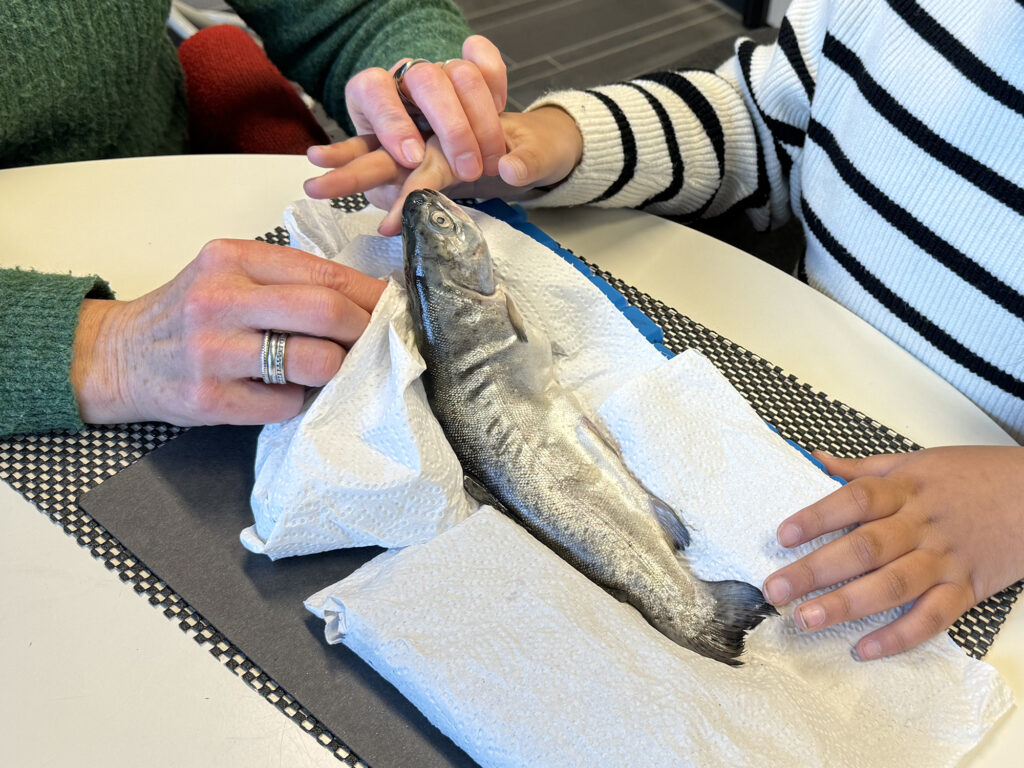
Collaborating with braille readers, Ann conducted typographical studies on visual and sound poetry from the Futurists and Dadaists. Standard braille’s limitations led her to develop a new tactile typography, using braille in a graphic way to enrich tactile reading. By experimenting with rhythms, textures, and forms, Ann made previously inaccessible content available to touch readers. She is now co-designing a multisensory tactile reading experience with blind artist George Kabel.
The new practice
Ann’s design research has led to establishing her new practice, ‘Tactile Graphic Design and Research,’ and positioning tactile graphic design as a new creative field within graphic design.
Over the last two years Ann’s role as a designer has changed significantly. Within the Netherlands, she holds a unique position as tactile graphic designer, working independently within networks for the visually impaired. Her large network allows her to initiate projects in special education, the creative sector and (dis)ability awareness. In this leading role she is able to share her expertise nationally and internationally, shaping and expanding this new field.
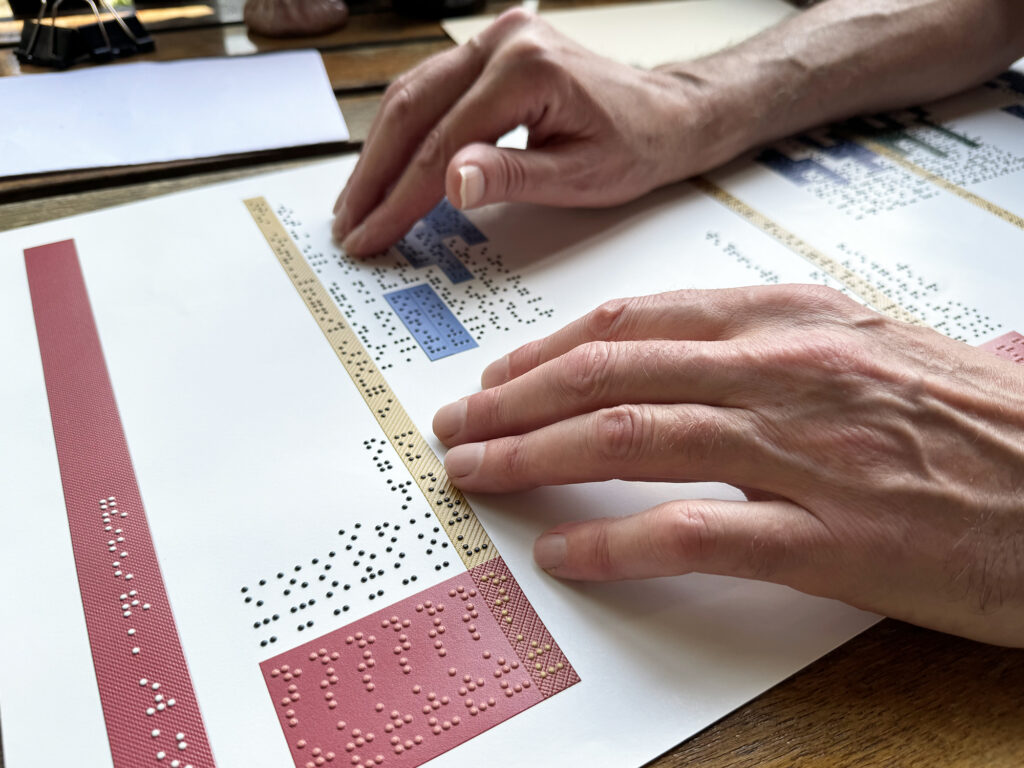
Ann’s pioneering approach to tactile design not only addresses issues of functionality but aims to maximise the tactile reading experience as a whole. Both as a researcher and a maker she enjoys experimenting with a wide range of tangible materials, handcrafts and high- and low-tech graphic relief techniques, archiving her work in a tactile library to innovate designs for tactile books, artistic projects and research tools.
As efforts to make communication more inclusive grow, tactile graphic design is highly relevant and holds significant potential. Collaborating closely with the visually impaired, she continues to research and develop tactile designs, making every effort to inspire others to incorporate tactility into design and bridge the gap between visual and tactile communication.
My ultimate aspiration is to catalyze a paradigm shift in design, where inclusivity and tactility are inherent principles rather than niche considerations.
Ann will continue to assist designers and organizations with advice and expertise, and is available for workshops, lectures and teaching, for students and professionals, with or without vision. In 2025 she hopes to present her research at the international conference, ‘Tactile Reading’, in Amsterdam.
the designer
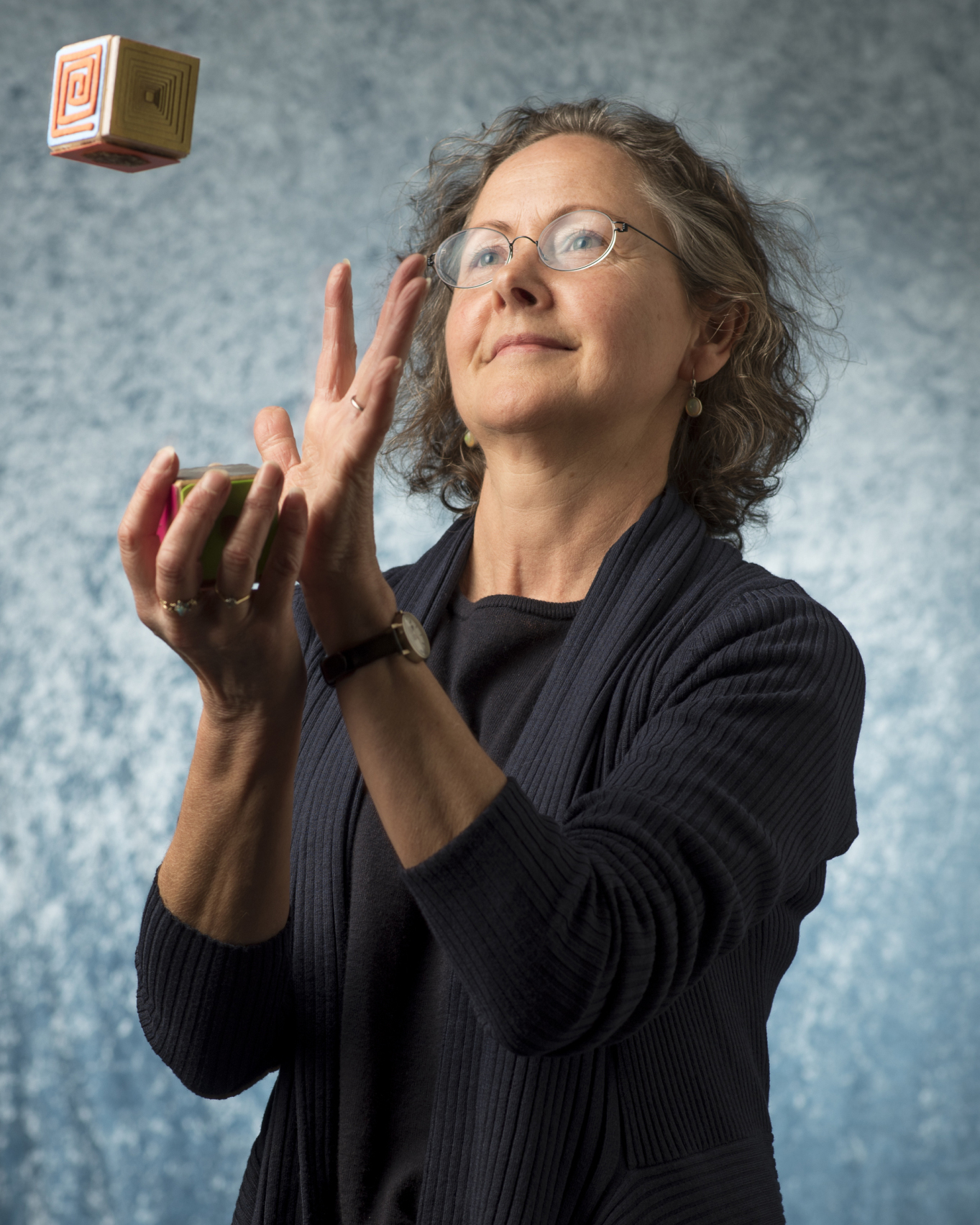
Photograph: Cristóbal Pereira
Ann is a graphic designer specializing in researching and practising tactile graphic design. By combining her background in art and design with her firsthand knowledge of visual disabilities and braille, she is in the unique position to bridge the gap between analogue visual and tactile communication. Her career spans more than thirty years, but her journey into tactile design began just over a decade ago. Motivated by the lack of accessible materials for the blind, including her own daughter, she decided to take action. Collaborations with special education and organizations promoting accessibility and blind sports have led to a range of projects, including three award-winning children’s tactile books.
With great passion for ‘touchable design,’ she has spent the last two years researching ways to increase the quality, diversity, and relevance of tactile graphic design. The many new collaborations have helped Ann strengthen her expertise and expand into new areas, initiating projects and co-designing with writers and artists, with and without a visual disability.
Alongside her new practice, Ann is currently working as an advisor for an Erasmus+ project, developing European guidelines for tactile children’s books. Ann welcomes opportunities for collaborations.
You can contact her via ann@conefreydesign.nl




